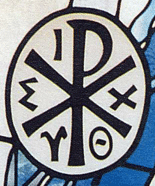The Saint Andrews Draft Covenant represents a marked improvement over the earlier effort. Many of the concerns raised in response to the earlier draft have been addressed, and a number of the troublesome details have been eliminated. In particular, the first two sections of the draft place the theology of covenant on a stronger foundation. Section One’s appeal to the articles of the Chicago-Lambeth Quadrilateral — long accepted as the basis for intercommunion with traditions outside Anglicanism, and so all the more meaningful as a basis for communion within it — establishes recognizable and already agreeable boundaries. There will, of course, continue to be disagreements concerning exactly what constitutes an acceptable “pattern of Christian theological and moral reasoning and discipline that is rooted in and answerable to the teaching of Holy Scripture and the catholic tradition.” (1.2.2) But the same section’s emphasis on remaining in Eucharistic communion (1.2.3) and common pilgrimage (1.2.6) in spite of such disagreements shows a grasp of the irrevocable nature of communion.
The enduring nature of communion is eloquently laid out in Section Two: it is a gift of God (2.1.1) ordered towards and nourished by mission (2.1.2,3) in a program of action deriving from the Anglican Consultative Council’s mission strategy, itself clearly influenced by the Baptismal Covenant of the American Book of Common Prayer. (2.2)
Section Three begins well, charting out, in an essentially non-controversial manner, the collaborative and consultative structures that have evolved, and are currently in place, in the Anglican Communion. It is only with paragraph 3.2.5 that we begin to hear about threats to the unity so well established throughout the rest of the document. If unity derives from Christ, how is Christ divided? If unity is found in our mission, how is unity challenged if the mission continues to be carried out?
Section Three defines our present difficulties rather than actually solving them: What are we to do when a minority of provinces in the communion disagrees with the majority? The ultimate answer offered by this draft, soft-pedal it as much as one likes, is excision — the very thing one would have thought impossible if the communion truly were based in Christ, who is not, and cannot be, divided. This draft continues in the mode of a pre-nuptial agreement rather than a covenant of irrevocable commitment.
Thus the primary difficulty with this covenant lies in providing for the dissolution of the very communion it seeks to preserve. It is therefore our recommendation that the appendix and section 3.2.5 (and its subsections) be deleted. What remains would then be worthy of the name “Covenant” — a promise to remain together, united in Spirit and in Mission come what may.
— a statement from the General Convention Deputation of the Episcopal Diocese of New York


2 comments:
This is way off track, however, you have posted an article on Episcopal Cafe, "A love which does not protect itself". I write to ask your consent to my cribbing generously from this article this Sunday in my sermon. Attribution will be given in the bulletin.
Faithfully,
Lois Keen
The purpose of adopting a covenant, as I understand it, is to promote unity within the Anglican Communion. One way of promoting unity within any institution is to throw out those who disagree with the dominant position, or to coerce them into a pretended orthodoxy by threatening to throw them out. This seems to be the strategy exemplified in the St. Andrews draft.
Another approach would be to promote unity by recognizing that people of faith can disagree, even on important things, and still be in communion. I like this approach better.
Post a Comment